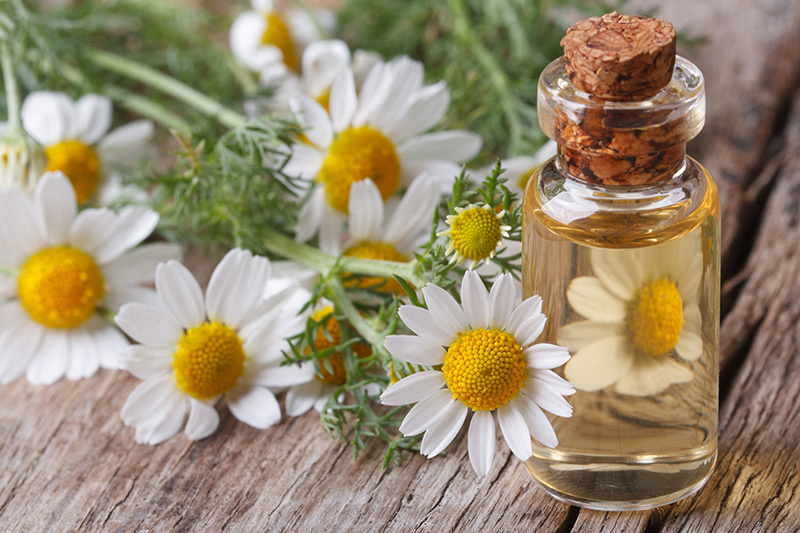Cultivating Hydrangeas: A Step-by-Step Approach
Posted on 03/07/2025
Cultivating Hydrangeas: A Step-by-Step Approach
Hydrangeas have captivated gardeners for centuries with their lush blooms, vibrant colors, and ability to transform any landscape into a stunning floral paradise. Whether you're a seasoned gardener or just starting your horticultural journey, understanding the best practices for cultivating hydrangeas can ensure your garden flourishes. In this comprehensive guide, we'll walk you through every step of the hydrangea cultivation process, from choosing the right variety to maintaining healthy, thriving plants.

Understanding Hydrangeas: A Brief Overview
The Hydrangea genus encompasses dozens of species and varieties. Hydrangeas are celebrated for their showy, globe-like blossoms that come in various hues, including white, pink, blue, lavender, and even green. Their color-changing abilities, contingent on soil acidity, make them particularly intriguing to flower enthusiasts. Common types found in gardens include:
- Hydrangea macrophylla: Known as Bigleaf or Mophead hydrangeas, these are popular for their large, rounded clusters of flowers.
- Hydrangea paniculata: Also called Panicle hydrangeas, they feature cone-shaped flower clusters and thrive in a range of climates.
- Hydrangea arborescens: Smooth hydrangeas with dome-shaped blooms, often in white or pale green tones.
- Hydrangea quercifolia: Oakleaf hydrangeas, recognized for their uniquely shaped leaves and elongated flower clusters.
Understanding the differences between these varieties is crucial for successful hydrangea cultivation because each type has unique requirements and characteristics.
Step 1: Selecting the Ideal Hydrangea Variety
The first step in cultivating hydrangeas is to choose a variety that matches your region, available space, and aesthetic preferences. Here's what to consider:
- Climate: Hydrangea macrophylla and H. quercifolia perform best in milder climates, while Hydrangea paniculata is a good fit for areas with harsh winters.
- Sunlight: Some hydrangeas thrive in full sun, while others prefer partial shade. Check each variety's light requirements before making your choice.
- Soil: Well-draining, nutrient-rich soil is essential. Some hydrangeas, like H. macrophylla, can alter flower color depending on soil pH--a fascinating trait for gardeners who enjoy experimenting with their landscape.
Pro Tips for Choosing Hydrangeas
- Consult your local nursery or extension office for advice on hydrangea varieties suited to your region.
- Consider bloom time and flower shape to create a diverse, long-blooming garden.
Step 2: Preparing the Planting Site
Successful hydrangea cultivation begins with proper site preparation. Follow these essential steps:
1. Location Selection
- Sunlight: Most hydrangeas prefer morning sun and afternoon shade, especially in hot climates.
- Shelter: Choose a site protected from strong winds, which can damage delicate blooms.
2. Soil Preparation
- Test your soil's drainage by digging a hole and filling it with water--if it drains within a few hours, it's suitable for growing hydrangeas.
- Amend clay or sandy soils with organic matter like compost or well-rotted manure to improve fertility and drainage.
PRO TIP: If you want to experiment with flower color, test soil pH. Acidic soil (pH below 6) tends to yield blue blooms, while alkaline soil (pH above 7) produces pink or red flowers.
Step 3: Planting Hydrangeas for Success
Planting hydrangeas correctly is foundational for their robust growth and exquisite flowering. Here's how to do it:
Planting Steps
- Dig a hole as deep as the root ball and about two to three times wider.
- Remove the hydrangea from its nursery pot and gently loosen the roots.
- Place the plant in the hole so the top of the root ball is level with ground surface.
- Backfill with a mix of native soil and compost, firming gently to eliminate air pockets.
- Water thoroughly after planting, ensuring the root ball is saturated.
- Apply a 2-to-3 inch layer of mulch around the base to retain moisture and suppress weeds.
Timing is key: The best time to plant hydrangeas is in early spring or fall when temperatures are cooler and plants experience less stress.
Step 4: Watering and Fertilizing Hydrangeas
Consistent hydration and nutrition are crucial for lush hydrangea blooms.
Watering Guidelines
- Frequency: Hydrangeas need about 1 inch of water per week. Increase frequency during hot, dry spells.
- Method: Water deeply at the base of the plant rather than overhead to minimize disease risk.
- Mulching: Mulch helps retain soil moisture and regulate temperature.
Fertilizing Tips
- Apply a slow-release, balanced fertilizer in early spring--avoid over-fertilizing, which can spur leaf growth at the expense of flowers.
- For blue hydrangeas, supplement with aluminum sulfate if your soil is too alkaline.
- For pink hydrangeas, use garden lime to increase soil alkalinity.
Note: Always follow label instructions and avoid fertilizing late in the season, as this can prevent plants from hardening off before winter.
Step 5: Pruning and Training Hydrangeas
Proper pruning encourages robust growth, controls shape, and boosts blooming capability. Yet pruning hydrangeas can be tricky, as different varieties have varying requirements.
When and How to Prune
- Hydrangea macrophylla: Prune lightly right after blooming, as they flower on old wood. Avoid drastic cuts in spring.
- Hydrangea paniculata & H. arborescens: Prune in late winter or early spring; these types bloom on new wood.
- Hydrangea quercifolia: Light shaping and deadheading in early spring or after flowering suffice.
General Pruning Tips:
- Remove dead or damaged wood at any time.
- Thin out crowded stems for better air circulation.
- Deadhead spent blooms to encourage new flowers.
Step 6: Protecting Hydrangeas from Pests and Diseases
Hydrangeas are relatively hardy, but like most garden staples, they can be susceptible to certain pests and diseases.
Common Pests
- Aphids - Can cause distorted leaves; control with insecticidal soap or ladybugs.
- Spider mites - Look for stippled leaves and fine webs; increase humidity and use horticultural oil if needed.
- Scale insects - Sticky secretions and bumps on stems; prune and treat with horticultural oil.
Common Diseases
- Powdery mildew - Appears as white powder; improve air circulation and treat with fungicides if necessary.
- Leaf spot - Brown or black spots; remove affected leaves and avoid overhead watering.
- Root rot - Caused by poor drainage; plant in well-draining soils and avoid overwatering.
Integrated Pest Management strategies, including regular inspections, proper spacing, and healthy cultural practices, are your best defense against problems.
Step 7: Adjusting Bloom Color (Optional)
One of the most exciting aspects of cultivating hydrangeas--especially Hydrangea macrophylla--is the ability to change the flower color by altering soil pH:
- For blue blooms: Lower soil pH (make it more acidic) by adding organic matter, peat moss, or aluminum sulfate.
- For pink blooms: Raise soil pH (make it more alkaline) by adding lime to the soil.
Test soil regularly and make amendments gradually, as dramatic changes can stress plants. This fascinating trait enables you to personalize your garden's color palette--a unique reward for hydrangea enthusiasts!
Step 8: Overwintering and Year-Round Care
Hydrangeas are generally low-maintenance, but some varieties, especially macrophylla, require protection from harsh winter conditions.
Winter Care Recommendations
- After the first frost, mulch generously around the base with straw or leaves to insulate the roots.
- In particularly cold zones, wrap plants in burlap or use plant covers to prevent winter burn.
- Avoid late-season fertilization to ensure plants are not tender and vulnerable to frost.
Year-Round Maintenance
- Monitor soil moisture, and water during dry spells, even in winter if there's no snow cover.
- Check for signs of disease or pest infestation through regular inspections.
- Refresh mulch annually for ongoing weed control and moisture retention.
Step 9: Propagating Hydrangeas for More Blooms
Hydrangeas are a favorite among gardeners not just for their beauty, but also for their easy propagation. You can multiply your favorite varieties using cuttings, layering, or division.
Propagation Techniques
- Stem cuttings: In early summer, take non-flowering shoots about 4-6 inches long, remove lower leaves, dip in rooting hormone, and plant in moist potting mix.
- Layering: Bend a low-growing branch to the ground, cover with soil (leaving tip exposed), and anchor. Roots develop in a few months.
- Division: Best for Smooth and Oakleaf hydrangeas. Dig up mature plants in early spring or fall, and gently divide the rootball for replanting.
Propagating hydrangeas ensures a steady supply of these remarkable shrubs and makes for wonderful garden gifts!

Common Mistakes to Avoid When Growing Hydrangeas
For bountiful, long-lasting blooms, avoid these common hydrangea cultivation pitfalls:
- Planting in poor-draining soil--hydrangeas abhor "wet feet."
- Incorrect pruning, which can lead to sparse or absent flowering.
- Over-fertilizing, which fosters leafy growth but few blooms.
- Planting in full shade, leading to leggy plants and limited flowering.
- Neglecting winter protection in harsh climates.
By steering clear of these mistakes, you'll set your hydrangea garden on a path to success!
Conclusion: Growing Hydrangeas for Endless Garden Beauty
Cultivating hydrangeas is a rewarding pursuit that brings enduring color, texture, and architectural beauty to your landscape. By selecting the right variety, preparing the ideal site, planting carefully, and providing attentive care, your hydrangeas will flourish season after season. Whether you're dreaming of a vibrant border, a dramatic hedge, or abundant blooms for floral arrangements, hydrangeas are sure to deliver.
With these hydrangea growing tips and step-by-step instructions, even inexperienced gardeners can master the art of hydrangea cultivation and transform their outdoor spaces into a flowering haven. Start your hydrangea journey today, and enjoy the breathtaking beauty of these remarkable shrubs for years to come!
Latest Posts
Exploring Why Red Roses Dominate Valentine's Day
Explore Your Personality Through the Lens of Flowers
Deciphering the Language of Birth Flowers and You





